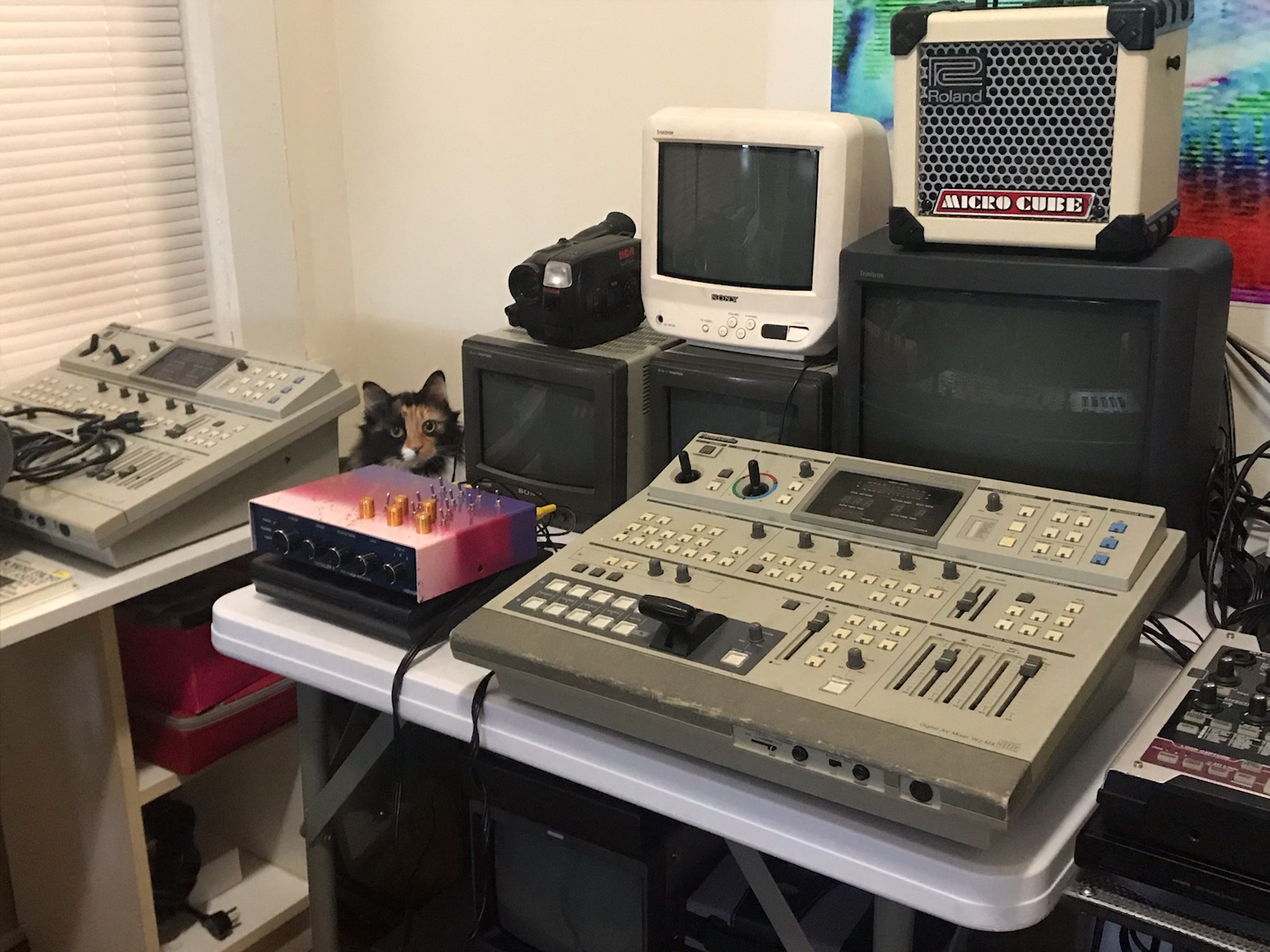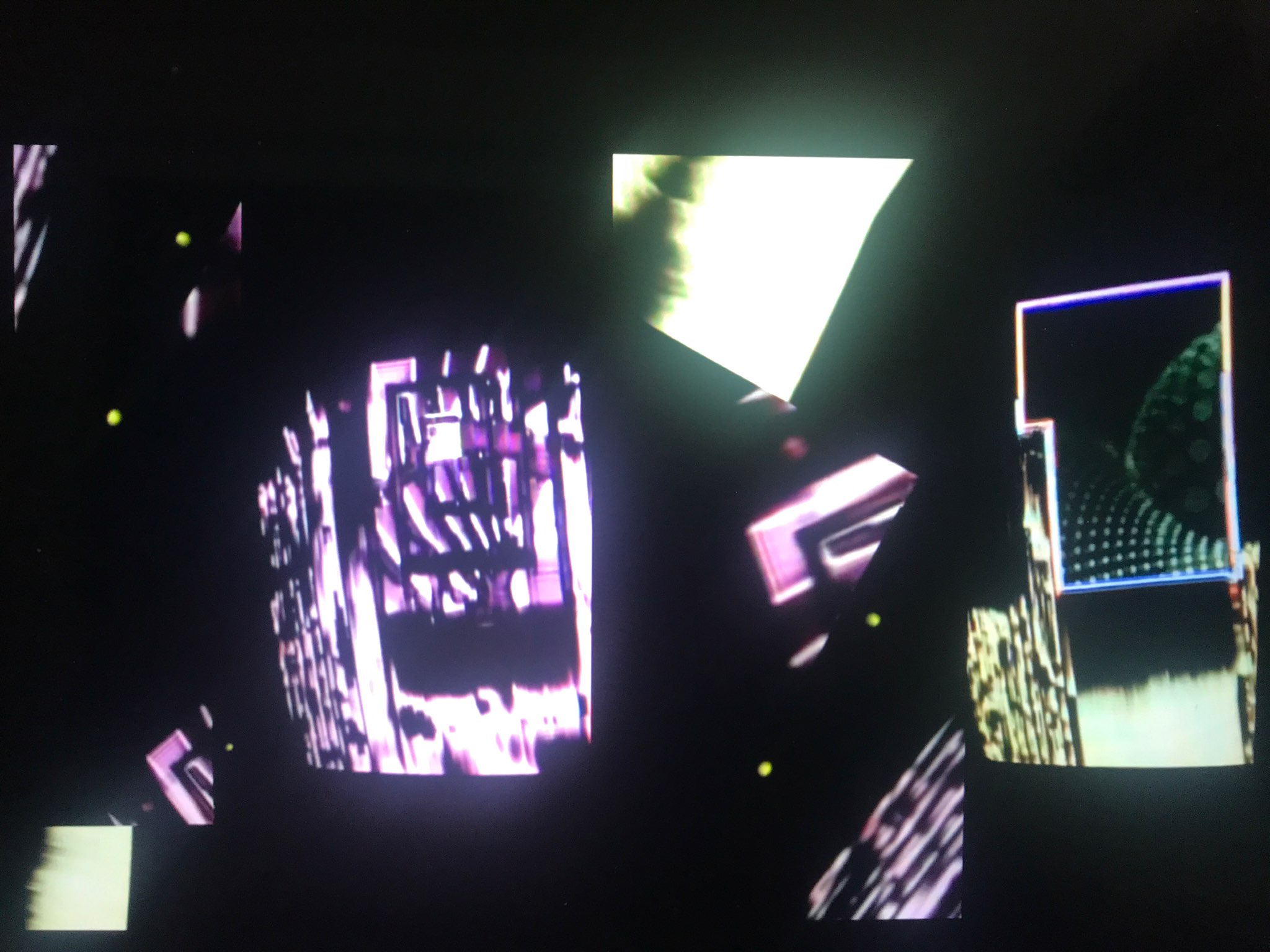Video Worship: Glitch, Good and Evil with Sara Goodman
Tonight Comfort Film presents Video Worship - a series of CRT Installation, Video art, music videos and animations put together by New Media artist, VJ and curator Sara Goodman.
I had the opportunity to sit down and talk to Sara about her upcoming program Video Worship.
E: How did you first become familiar with Comfort Station?
S: I feel like I’ve known about Comfort Station for so long I don’t even remember when I first found out about it. It’s been a part of my life since I first moved to Chicago in 2012 and have been going to things since its inception.
E: What do you think of the Film Scene in Chicago?
S: I love it, I think it’s really unique and awesome. There’s a ton of DIY cinemas and for awhile I was submitting to Wretched Nobles when Emily Esperanza was in Chicago... and besides all that I love the Music Box. Both of those bring in really interesting (perspectives). The Music Box has Cinepocalypse every year, and I wait for it, that shit’s so good. It doesn’t have to be DIY, I love anything that’s good.
E: How did you this program come to you?
S: This is the first video screening I’ve ever curated, being asked to do it prompted me to figure out what I was going to do. It pushed me into territory that I hadn’t been in before. I am a video artist and I work in video, but more in the domain of live VJ’ing or as a visualist for bands. I do work a lot with old tech, like video feedback stuff, so I can be pretty nerdy. When I was asked (to do this program) I was like I can showcase all my contemporaries that are working in a similar vein, also making music videos, animations and abstract video art. I pooled all the people I follow on social media and reached out to them and that’s how I was able to put this together.
E: What’s the philosophy of this curation?
S: The philosophy of this program is “Videos that Sara likes”.
E: That’s what it sounds like!
S: I guess the overlapping thread would be that there’s some kind of interesting technological process being used, whether it’s touch design or video feedback loops or making music videos with circuit bent boxes. I think it’s all stuff that’s flooding my instagram, my instagram is pretty much all video artists and video creatives - it’s almost like I created it to please my brain.
E: How long have you been making video work?
S: I first experimented with video in 2011, mostly my creative outlets before then had been writing and painting, but I had a back injury and I couldn’t move to write or paint but I could lay in bed with a laptop. I found really cheap editing software and started to fuck around with stuff I would take on my iPhone or a digital camera. So that was the beginning. But I didn’t really start messing with video in the vein that I do now until 2014, when I was watching the World Cup on a stream, and my computer glitched out. It was these beautiful purple, orange pixelations and I was like “Oh man, there must be a way to glitch things on purpose”. I did some research and found this whole glitch community that was international but there’s also a really amazing glitch community in Chicago, the Dirty New Media scene. That kind of sprung out of the School of the Art Institute and this professor there, John Cates.
E: That’s not usually people’s reaction to a glitch in their World Cup stream.
S: It led to a whole shift in my artistic practice, it was one of those funny moments where I’m like “What if it hadn’t glitched at that moment”?
Sara’s Home lab
S: In 2015, my practice became really hardware based, everything became like video mixers, circuit bent boxes...
E: Has that changed your perspective at all?
S: It’s definitely made me realize that you can paint on a TV, I used to think of a canvas as the only way you can paint and it kind of opened me up to other tools, and you can use this hardware, hook it up to a monitor and have these really beautiful effects in real time. I think it just changed the way that I look at my art practice.
E: How has that figured in to how you see other’s art?
S: I guess the only way it has made me think differently... I think about what went into making that happen. I guess working with hardware and working with bands has made me think about “Okay, what is that visual it’s doing to get those effects” and I’m able to discern things now that I wasn’t able to discern before. But I don’t think it has changed the way I view other people’s art. I just want to meet other artists where they’re at - working with hardware doesn’t change the way I see a painting on the wall.
E: What are some of your favorite things you’ve seen or experienced recently?
S: I’m really into Octavia Butler and the world she creates and I’m reading this novel right now called Wild Seed.
E: I’m curious as part of this guest curator series what things are present, despite their “relevance”.
S: I’d say where I’m at in my daily life right now is Red Dead Redemption II, NBA 2K19... I love watching basketball and seeing basketball players move. My favorite basketball player is Kevin Durant - I have no idea how that might relate - but those are the things in my immediate sphere right now… Besides that I really love @polyhop and he does generative visuals with a program called touch designer and he’s also starting to get into analog a little bit, his work’s really beautiful. Pretty much everyone you’re going to see in the show, there’s about 20 artists, that’s exactly who’s been influencing me.
E: What was your method for assembling this program?
S: One of the things I’m showcasing in the series are people who work with TV wall installations, like old TVs which are called CRTs. I’m using different video installations through different parts of the program to tie it together.
E: Do you have any interest in VHS?
S: I’m very in love with older tech, gear that has some weight to it, things that have buttons that you press and hear them click. I like the tactile nature of that. And I like that lo-fi aesthetic, recordings that feel fuzzy and have static. I love the static and lo-if nature of VHS.
E: Well it’s warm, it’s a nostalgic thing for people and it doesn’t have the cold cleanliness of newer technology.
S: For me it’’s not so much nostalgic as it is a preference, I do have a ton of TVs at home. My partner always makes fun of me because I have TVs that are quite big but for some reason I always watch my VCRs on the smallest TV that I have - it’s a combination radio TV thing.
E: Are you working on anything right now?
S: Right now I’m editing a manuscript that I’m going to try to publish, I’m taking a break from gigging and it’s nice to have a period of rest. Every time I gig I have to disassemble my home lab and move all the gear there, it’s like I’m in a whole band but I’m just the VJ!
E: What’s your writing background?
S: I got my MFA in poetry and did my undergrad in poetry also. That’s my more formal craft, this other stuff came from following my intuition and learning on my own. My last book Starfish I wrote during the polar vortex of 2014. I wrote it almost entirely during those 3 days. It’s a long narrative poem that’s about 87 pages about being new in a city - going back and forth between my life in Chicago, going on dates, failed relationships and remembering my life in New York which is where I’m from. My cat at the time figures prominently in it. I’m working on a new piece called Deep Dream which is much more about my love/hate relationship with technology and social media. It’s a lot of observations about scrolling and getting lost in feeds and coming out of them. That feeling of it being hard to go anywhere without your device and imagining the world before we had them.
E: That’s an interesting thing from someone who’s as involved in technology as you are. It feels apparent especially in film where you’re in constant contact with technology - the hazardous nature of having things be accessible by and reliant on social media.
S: Yeah, for example without Facebook or Instagram I wouldn’t be able to curate this show, I wouldn’t have direct access to these artists - and in some ways it has cut out the middle man. I can see you posting stuff, and you’re in Berlin and I love your stuff and I can message you! It’s an instant way to communicate. But at the end of the day when you peel the layers back and the stink of Mark Zuckerburg at the epicenter of it - and at the epicenter of all of it is capitalism and corporations and shit we don’t even know... I’m always constantly trying to navigate that.
E: It definitely has an effect on the human brain.
S: Greater access and sometimes I worry that people don’t take the time to reflect and synthesize information in the same way that we used to. A lot of times when there used to be that quiet moment or quiet space we used to have to allow that to exist. Now you can just jump on an app and not have to deal with yourself.
S: It kind of circles back because all of the artists in this program I found through Instagram. There was something really exciting to me about lifting them off of the tiny screen, we’re actually meeting in real life in real space. You’re actually taking the time to interview me - and to write about it. To me that’s so much better than being in our isolated boxes and scrolling.
E: I like the idea of that - making the online flesh.
S: The tools aren’t going away - we can dream them out of existence in our minds as much as we want, but they’re here, they’re not going anywhere. So if they’re here, how can I be holistic about it.
E: One of my favorite things to ask people is what the first piece of art you remember is.
S: In the house I grew up in, in New York, my parents had a knitted landscape - it was like knitted fabric in a frame. It was a spring day with things just being in bloom, there was a Cherry blossom tree and a path, it was really a pastoral spring scene and because it was made with fabric the trees were puffy and three dimensional. I remember being 3 or 4 years old and climbing on top of the couch and staring at it for what felt like hours. It looked like Narnia or something to me, I felt like I could go into it.
Interview by Emily Perez
Find More of Sara Goodman’s work here.
Video Worship is presented as part of our Guest Curator series which continues in the month of May. Next week Kat Sachs will be presenting Agnes Varda’s film Daguerréotypes on 16mm.
Come see Video Worship tonight at 8 pm for free at Comfort Station.







